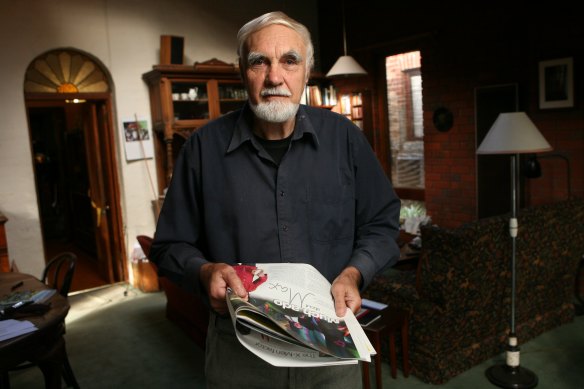
BARRY THOMAS PULLEN November 1, 1939-June 26, 2024
There is no local campaign or community action in the past four decades in inner Melbourne that does not bear the imprint of Barry Pullen on it. From fighting the then housing commission slum reclamation program in the 1960s to saving the Fitzroy pool in the 1990s, Barry was in the thick of it. More often behind the scenes, never big noting, but providing focus and strategy to the task.
Barry was born in 1939 to parents Thomas Pullen, a fibrous plasterer and Ellen Roderick. Barry was married to Margaret Arkerley, and father of Naomi, Joanna and Emma. Barry was a civil engineer a long-time resident of Fitzroy, bushwalker, activist, member of the ALP, Fitzroy councillor (1972-76) and a founding member of Fitzroy Residents Association.
Barry’s path to parliamentary office was through his lengthy involvement in community action and not the traditional pathway through trade union sponsorship. He was a member of the Legislative Council in the Victorian Parliament (1982-1999) and a minister in the Cain and Kirner State Labor governments holding various portfolios that included housing, education and conservation and the environment.
Before being elected, Barry was employed as a draftsman and civil engineer in the commonwealth and state public service before being elected to the Victorian parliament in 1982.
Barry and his wife, Margaret, were long-term residents of Fitzroy. In his first speech to parliament, Barry recalled walking around the Brookes Crescent area in Fitzroy North slated for slum reclamation, “spending a whole day talking to people in the area who in large part were migrants and pensioners”. Barry recalled in this speech “that at the end of the day I came away with the acute feeling of outrage at the policy of displacing people, an act we could see no good in. The very people who were meant to be assisted by the policy of the Housing Commission were the sorts of people who were living in those houses at the time.”
Barry and his friend Alan Jordan thoroughly surveyed the area and helped to build the North Fitzroy Residents Association that in turn organised a community campaign that saved Brookes Crescent and demonstrated the flaws that ultimately destroyed the legitimacy of the Housing Commission’s so-called “slum” clearance program.

Barry Pullen: took seriously the changes occurring in the inner suburbs.Credit: Stephen Lightfoot
You did not need to travel very far from Barry’s home in Fitzroy North to find evidence
of his contribution to his local community. In 1992, the Kennett government closed Fitzroy High School with minimal consultation with parents and local residents who conducted a two-year blockade of the school, sustaining a 24-hour presence in the school to ensure it remained safe. Barry and Margaret were strongly supportive of these efforts, playing a very active part in the blockade and following a brief period as part of TAFE. The Fitzroy site was the only high school closed by the Kennett government ever to reopen.



























